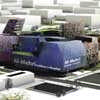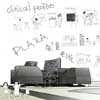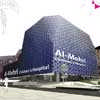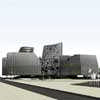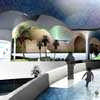Kuwait Children’s Hospital, Gulf Healthcare Building Image, Architect, Architecture Design
Kuwait Children’s Hospital
New Healthcare Building Development in The Gulf, Middle East – design by AGi architects
18 Oct 2010
Kuwait Children’s Hospital Building
Architect: AGi architects
AIMS of the project
– Provide patients and families throughout the region with easy access to specialty care
– Build programs that set national standards for quality
– Provide the best possible service to families and referring physicians
– Develop the next generation of health-care leaders through its teaching programs
– Conduct research that contributes to the prevention, treatment and elimination of diseases that affect children
– Preserve the organization’s financial health, while keeping the promise to provide care regardless of a family’s ability to pay
– Create sustainable urban, social and environmental development context.
A hospital that does not feel like a hospital
The Kuwait KCH site is prominently located at the edge of the existing Al-Sabah Hospital Campus, and sits directly adjacent to the existing Al Sabah Pediatrics Hospital and the NBK Pediatrics Hospital. It faces a large empty plot that is allocated for future expansion. As such, it is highly visible from the Jamal Abdul Nasser Street (Rd 85) and its surrounding neighborhood.
The driving force behind Kuwait Children’s Hospital (KCH) is the vision for a better future for sick and injured children.
The proposed design for the KCH is conceived as a Landmark that responds to climate and culture, and re-interprets these values in a mid-rise building, creating an image appropriate to the donors and the children.
We seek to express in the skyline a powerful sign that establishes a strong sense of place, history, and future for the children of Kuwait. The building will give an image that children will not associate with discomfort and stress, but with wellbeing, energy, and challenge.
We propose a cheerful and colorful building that stands out from the deteriorated surroundings and is easily recognizable by the children. Like a fortress, it creates an exterior monolithic image that seeks protection from the harsh climate conditions, and a softer interior oasis tailored to the children’s use.
Treatments and medical technologies are constantly changing, and KCH has to become a highly specialized academic medical center that serves children and youth for all complex health problems. KCH is dedicated to serving all the care needs of patients, premature through young adult, and their families, in a convenient, compassionate and high-quality manner.
KCH should also greatly expand its role in medical research, and become engaged in major research projects that address many of the most important diseases of childhood, including asthma, diabetes and HIV AIDS; as well as depression, gene repair and neurodevelopment. The KCH will be committed to providing research and teaching programs in an environment characterized by integrity, innovation, excellence, and respect.
Branding the wards – different donors under one roof
Given the robust growth in demand, GCC governments have actively started looking at ways to boost private sector participation in healthcare services. It is expected the involvement of donors in the future of the KCH will increase drastically.
Donor’s contribution to the hospital is the only way to materialize such an ambitious and necessary project as KCH.
Each ward will be given a branding theme that relates to the donor by means of color and pattern (for example: animals, fantasy, flowers…). The role of the donors is to create a hospital on par with the best international health facilities and provide the community with proper health resources. The design of each thesis will have to be conducted with the involvement of patients and family, as well as medical staff, to achieve the best positive healing environment.
Fulfills urban services to the whole hospital campus community
Hospitals should try to bridge the gap between the medical establishment and everyday life, which will call for strategies to reintegrate the hospital into the urban tissue.
In the KCH, the retail podium fulfills these basic urban needs (Bank, Hotel, Restaurant, Shops…) and provides services not only to the hospital users but for the whole neighborhood as well. This will help to easily integrate KCH in the existing urban fabric and become an urban anchor in the area. This way the KCH is also a first step towards restoring everyday life into the existing Hospital campus.
Access to the hospital is located above the retail podium which leads to a climate controlled lobby or Plaza. This surface is a continuation of the exterior landscape into the building, bringing in the pedestrians by means of ramps from all around the plot limits. This elevated position of the Plaza helps in giving a sense of power to the children and users over the street level which also contributes to their reassurance.
The Plaza is perceived as a vast play and entertainment area roofed by a vaulted colored structure. Big openings will bring in natural light into the space and will visually relate to the roof garden. This is the first impression that children will have of the hospital and it is very important that they feel attracted and charmed by the space. It also aims to be perceived as a cocoon for the families of the patients.
PROGRAM
The clinical facilities are located on top of the plaza. These include Intensive Care Units, Operation Theatres, Laboratories, Central Hospital Pharmacy, and all necessary clinical facilities common to the whole hospital. The access to this area is restricted to the staff and inpatients. This is the functional Alma matter of the hospital that connects the different wards and facilities and allows the staff to access all areas in a fast and efficient way. Compact planning contributes to the efficiency of the building in terms of circulation and energy management.
The facades in this area are permeable to the exterior in order to help orient oneself in space and time, and reduce the fatigue of long hours of work.
The basic wards configuration is an inside-out mid-rise building isolated from the street that opens up to the interior roof gardens and courtyards. Their circulation relates to the street façades acting as a protective shell against the noise and harsh weather conditions of the region. On the other hand, the rooms face the inside of the building with glazed planes that allow the patients to connect visually with both the inner roof garden and the Plaza.
This holistic healing environment includes several courtyards that overlook to the Plaza and its daily life activity. It is important for children not to be surrounded only by sick patients and disconnected from normality. The roof garden represents the local sustainable ecosystems (GCC, and the Middle East region) and become an ecological learning ground for the children.
Patient care rooms are designed with many unique features to promote family centered care. Single inpatient rooms are “zoned” with distinct areas for clinical care; patient areas and a family areas. They are furnished with a daybed, storage, comfortable seating and a desk with Internet access.
The vision for the KCH Cardiac Center is to provide complete diagnostic care and consultation for children under one roof. The KCHCC will be a fully integrated pediatric heart institute, combining interdisciplinary cardiovascular units into a functional whole intended to accelerate the flow of knowledge from bench to bedside.
The Cardiac Center shall bring together clinical care, research and education programs to advance comprehensive care for children with heart disease and develop novel therapeutic avenues for treatment.
Phases
The design includes provision of future extensions. This is a 4 phases project, in which the conceptual development will be enriched by the new needs of future extensions. A modular structural system used as pattern for the whole layout, will be used on each of the four phases, as a design guideline. Central exterior courts, and shaded plaza will grow at he same time as new buildings, what give new proportion to the public and private uses.
Conclusions
Hospitals are also built catastrophes, anonymous institutional complexes run by vast bureaucracies, and totally unfit for the purpose they have been designed for. They are hardly ever functional and instead of making patients feel at home, they produce stress and anxiety. Staying in hospital is an alienating experience that separates the patient from his family, relatives and friends, confronts him with a labyrinthine structure that makes him feel lost, presents him with the hospital clock that now determines his life, and often forces him to share a room with total strangers. Nobody in his right mind would ever volunteer to spend time in this type of institution.
Attention should be shifted from the doctors’ perspective to the patient’s, from therapy to the art of healing, from isolation to the community.
Hospitals cannot be derived from functions alone. Functions are temporary, they have a limited span. The task for governments, property owners and designers is to create and build structures in which time itself may play a role. Building should allow free (ab)use and be fit for squatting by successive generations and technical developments.
Because designing a children’s hospital is such a great task, we realize that using intuition alone to create the right concept may not be enough. We want to create a design that could potentially heal patients, provide parents with hope, and keep the staff energized day after day. How do you begin designing a hospital that can enhance the healing process?
We want answers from patients, parents and staff about what they truly want in a new hospital. In turn, we would create a healing environment for them with this new hospital.
“It’s of no importance what is newer; what counts is what is better…”
We believe strongly in minimizing the impact of all new buildings on the environment. In an effort to provide a healing place for our patients and their families, as well as be a responsible keeper of natural resources, Kuwait Children’s Hospital has to include measures in its planning to reduce energy use and create healthy environments.
Design Team
Dr. Nasser B. Abulhasan, Joaquin Perez-Goicochea, Daniel Muñoz Medranda,
Gwenola Kergall, Sharifa Alshalfan, Moyra Montoya Moyano, Marisa Ollero,
Carmen Sagredo, Stefania Rendinelli, Robert Varghese
Kuwait Children’s Hospital – Building Information
Project Name: Kuwait Children’s Hospital
Type: Hospital
Area: 14,000 – 40,000 sqm
Location: Kuwait City, Kuwait
Date: 2009
Client: Ministry of Health, Kuwait
Kuwait Children’s Hospital – Building images / information from AGi architects
Location: Kuwait City, Kuwait
New Kuwait Architecture
Contemporary Kuwait Architectural Selection
Kuwaiti Architecture Designs – chronological list
Kuwait Building designs by AGi architects:
Al-Farwania & Al-Jahra Court Complex
Design: AGi architects
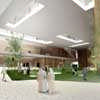
picture from architectural office
Kuwaiti Court Complex
BBS Preschool
Design: AGi architects
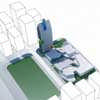
pictures : AGi architects
BBS Preschool Building
Central Bank of Kuwait Building
Design: HOK (London) with Pace (Kuwait)
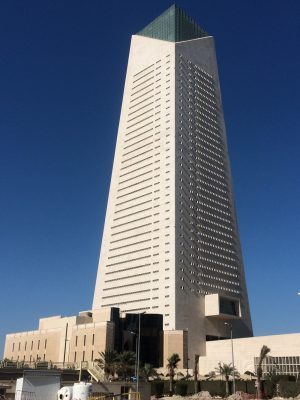
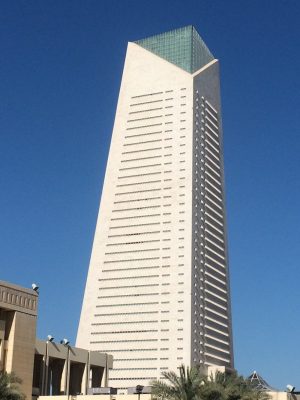
photograph © Adrian Welch
Central Bank of Kuwait Building
Sheikh Jaber Al-Ahmad Cultural Center
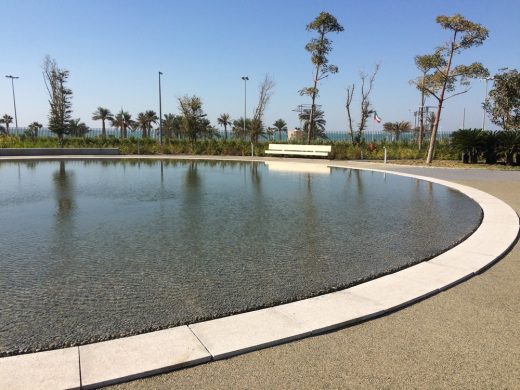
photograph © Adrian Welch
Sheikh Jaber Al-Ahmad Cultural Center
City of Silk : massive city-scaled waterfront development, incl. new airport + seaport
Comments / photos for the Kuwait Children’s Hospital page welcome

